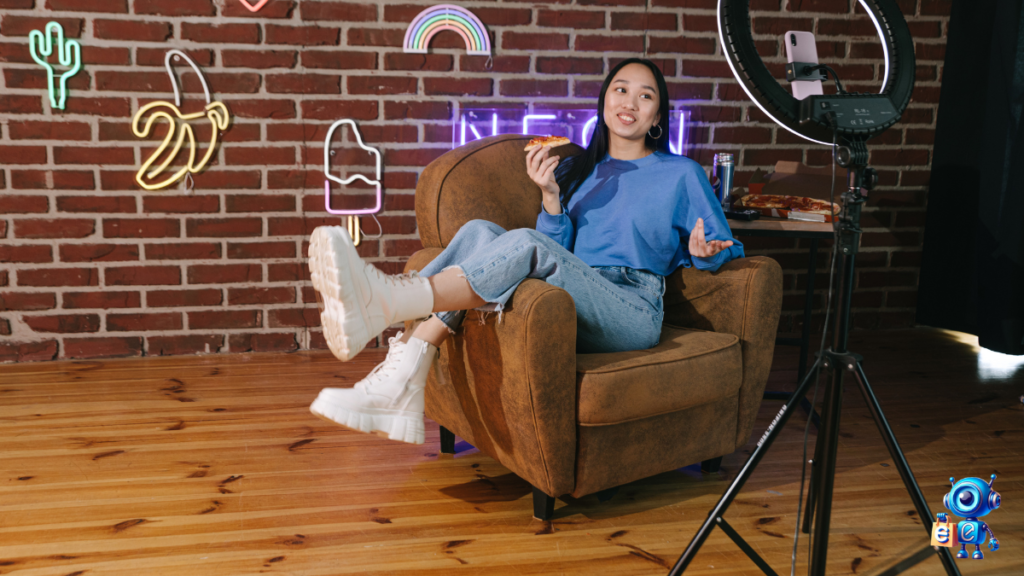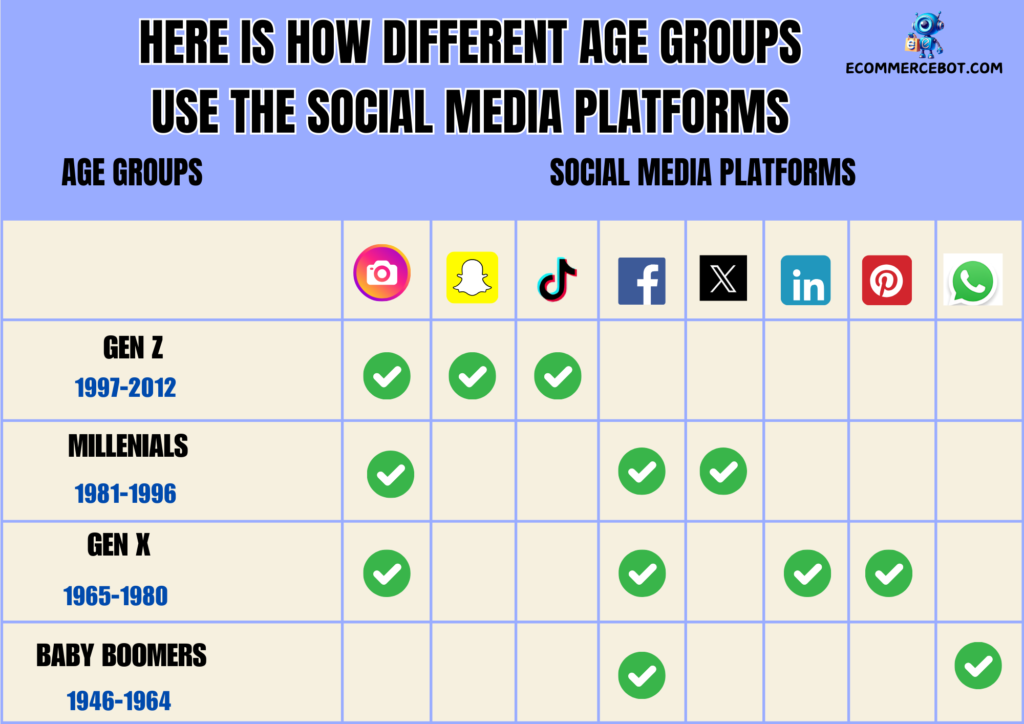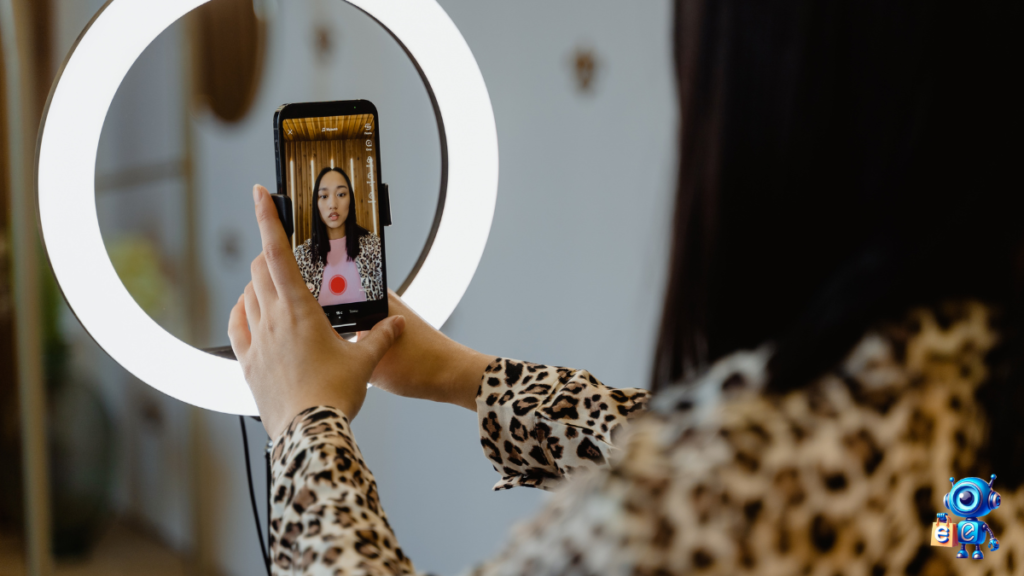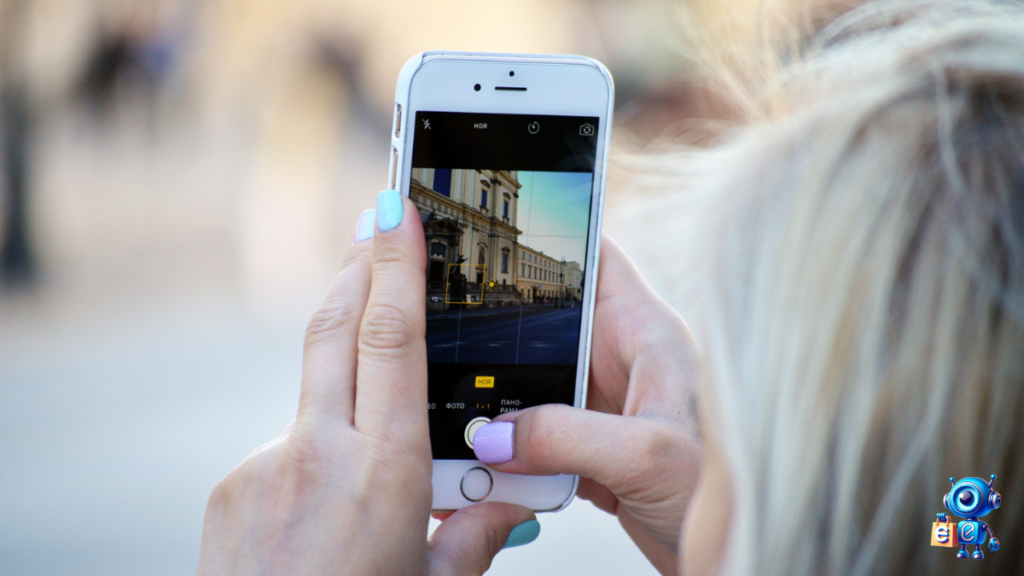Influencer marketing is one of the most popular and effective ways of advertising your brand or offering. That’s thanks to the increased number of online users who now trust influencers more than other forms of marketing.
Forecasts show that around 82.7% of marketers plan to include influencer marketing in their strategies in 2024.
These numbers imply that while influencer marketing has yet to dominate social network ad spending, it is getting there soon.
But how do you ensure a successful influencer marketing campaign for your business? Nothing is automatic—everything needs good planning and execution to get the desired results.
Well, that’s precisely why this piece was compiled. It explores everything you need to know about influencer marketing.
Here, you’ll learn how to set up and run an influencer campaign most successfully.
Table of Contents
What Is an Influencer Marketing Campaign?
The first step is thoroughly understanding how an influencer marketing campaign works. This will allow you to quickly learn how to set up or run an effective one.
Simply put, an influencer marketing campaign is a marketing tactic that employs influencers to promote a product or brand on online platforms.

Businesses partner with influencers, mainly popular online creators, to promote or get their products or services in front of their target audience.
In other words, a business pays an influencer to undertake marketing activities that promote their offering to the influencer’s following. And owing to their massive followings and influence over their followers’ purchase decisions, this has become an effective marketing strategy.
Some of the most common marketing tactics that influencers use to promote brands or products include:
- Recommendations
- Product reviews
- Posting product-focussed content
- Mentions
- Tagging the products or brands
All these tactics help the brand or its products get more visibility in the eyes of its target audience.
Types of Influencer Marketing Campaigns
There are several ways to use influencer marketing campaigns to reach your target audience. Each option has its benefits and drawbacks and is ideal for different situations.
Your influencer marketing campaign type is based on your target audience, budget, and campaign goals.
So, which are these influencer campaign types?
Sponsored Posts
This is the most common type of influencer marketing campaign. It involves hiring an influencer or influencers to create social media posts featuring your brand or products on their social media platforms.
However, while posting this content, the influencer should indicate that the content is sponsored. This is one requirement about influencer marketing that you should adhere to.
An influencer can use hashtags like a #ad or #sponsored to show that the post is paid for or sponsored.
Sponsored posts or content could take any form, depending on the social media platform used.
For example, it could be text, an image, or a carousel promoting a particular product or brand.
Affiliate Campaigns
Affiliate influencer campaigns could be your best option if you run on a budget. These campaigns involve influencers promoting your products and getting paid commissions on the sales made from their activities.
Usually, the influencers have affiliate links that help you track the amount of business they bring through the campaigns. Every sale made through the links earns the influencer commissions.
This is a budget-friendly option for you as it does not require much upfront cost. The influencer is paid based on the business they bring. Even better, you can use numerous influencers in your campaigns without extra cost.
Note: The affiliate links usually include discounts that entice the audience to purchase.
Giveaways
Businesses and brands use giveaways and contests to create hype and increase engagement around a product or service. These activities also encourage users to create user-generated content, significantly promoting the business.
Using an influencer to promote giveaways makes them even more effective, as they can reach larger audiences.
Therefore, if you plan contests or giveaways for your brand, influencer marketing can boost it. Also, those who enter the giveaways leave information you can use later in future campaigns.
Product Reviews
This type of influencer campaign involves sending your products to influencers for review or unboxing. The influencer is paid to review the product on their social media platforms, where their followers can see and engage.
Product reviews can create more product awareness and even bring about sales.
With the trust they enjoy from their followers, influencers can easily sway many people into using your products.
However, like in sponsored ads, there are disclaimers for product reviews. The influencer must inform the audience they are paid to review the products. This way, users can make decisions out of their own volition.
Brand Ambassadorships
It is also a common influencer marketing campaign tactic. In this scenario, an influencer enters into an ongoing partnership with a brand to represent it.
The brand ambassador promotes the brand through social media posts, wearing branded materials from the company, using the brand’s products in public, attending events on behalf of the brand, and being featured in the brand’s ads.
In other words, a brand ambassador becomes the face of the brand for a specified period. During this period, they can do anything legal and socially correct to promote a brand based on the set rules.
The tactic can be quite effective, especially if you choose the right influencer. However, depending on the influencer, it can be low-cost or expensive.
Influencer Takeovers
With an influencer takeover, you allow an influencer to control your social media platforms for a specified period.
This allows them to post and engage with your audience, which also helps attract the influencer’s following.
Influencer takeovers provide a fresh touch and perspective on your brand on social platforms. They are also a great way to increase brand awareness, bring more traffic to your sites, and encourage new users to try your products.
How to Set Up and Run an Influencer Campaign
When planning to run an influencer campaign, your vision is to have a successful campaign that brings results.
However, achieving that isn’t easy, and many influencer marketing campaigns need to catch up to their set targets.
So, how do you ensure that your influencer campaign is set to produce the desired results? Strictly follow these steps:
Define your Campaign Goals
The first step is always defining your goals. Once you know what you want to achieve, you can work backward. Clearly defined goals will help you avoid deviations derailing a successful campaign.
Any of these goals could guide your influencer campaign:
- Creating brand awareness
- Generating quality leads
- Driving traffic
- Building trust and loyalty
- Increasing sales
Based on your goals, you can now come up with the right strategy for achieving them.
Set Up a Budget
Any marketing campaign should have a budget. This guides your activities and ensures that everything is manageable.
Without a budget, you may not accomplish some activities because there is insufficient money, or you may direct more funds on specific tasks, depriving others.
A budget also allows you to determine the type of influencer campaign you want to undertake. Most importantly, it helps you choose the kind of influencer or influencers to include in your marketing campaign.
Define your Target Audience
A target audience is the basis of any successful marketing campaign. If you choose the wrong audience, all your marketing efforts will be washed down the drain.
Identifying and segmenting your audience helps you set up an effective influencer campaign.
You can define your audience using demographics, buyers’ preferred channels, psychographics, or their lifecycle stage. Once you have the right audience group, you can decide which type of influencers would work best for your campaigns.
Choose a Campaign Type
You need to decide which type of influencer campaign you will use. For instance, will you use sponsored posts, product reviews, social media takeovers, or affiliate campaigns?
The option you pick here determines your next course of action. For example, which type of influencer will you use? Also, how long will your campaign last?
Choosing the right campaign type also determines how costly it will be for your brand. Therefore, ensure that you choose wisely based on your goals and budget.
Decide the Type of Influencers to Use
When setting up an influencer campaign, you should understand that there are different types of influencers. Also, only some influencers are ideal for your campaign. So, based on your goals, budget, and target audience, pick your influencers from this list:
- Nano influencers: These are influencers with 1000 to 10k followers. They are ideal for specialized niche markets as they are more engaged with their followers, which helps reach a genuinely interested audience.
- Micro-influencers: These influencers have followers between 10k and 100k. You can use them to reach a broader but highly engaged audience.
- Macro Influencers: These are influencers boasting 100k to 1 million followers. They offer a wider audience but relatively low engagement compared to the first two options.
- Mega Influencers: Big brands or those seeking to reach massive users can hire mega influencers. They have over 1 million followers and are ideal for brand awareness, especially for brands across numerous market segments.
The more followers an influencer has, the more coverage your product or brand will get. However, this also comes at an extra cost.
Consider your goals and budget before deciding on the best influencer type. Your audience type also plays a significant role here.
Nano and micro-influencers are ideal for niche markets, while macro and mega-influencers work best for those targeting broader markets or with products across various segments.
Choose Social Media Platform
You can use multiple social media platforms for your campaigns, but it might be challenging. Running influencer campaigns on various platforms can be costly and overwhelming. Additionally, it might be reflexive, as your attention is divided among multiple campaigns.
Therefore, picking a platform to run your campaign that aligns with your target audience and budget is prudent. Remember, different audience types use other social media platforms.
For example, Snapchat is ideal for a teen audience, while Instagram is ideal for a Gen Z audience.
In other words, your audience type should determine the platform you use. If you have yet to define your audience, this stage becomes challenging.
Here is how different age groups use the social media platforms:

So, where does your audience fall?
Create Influencer Campaign Content
The message you present to the audience is also paramount. It determines how well the audience receives and interacts with your campaigns. If your content doesn’t appeal to your target audience, even the best product or campaign strategy will have difficulty succeeding.
Therefore, tailor your content to suit your target audience. Conduct enough research and use the right marketing tools to create a message your audience embraces. EcommerceBot is an excellent platform to help you tailor the best marketing message for your target audience.
The best tips here include:
- Understand your audience’s needs, preferences, pain points, etc.
- Identify your product’s USPs
- Position your offering (product or service)
- Focus on the customer
- Be concise
- Create content that evokes emotions
Doing this helps you get into your target audience’s minds and quickly get meaningful interaction.
Find and Approach the Right Influencers
You can now choose your influencer with the right content, platform, and influencer type. However, choosing an influencer takes work. You need to select the right one, considering parameters such as reach and niche.
Some great tips here to help you pick the right influencer include:
- Define campaign goals and requirements – you did that in your first step.
- Compile a list of influencers that match these goals
- Determine the influencers’ engagement rate
- Determine the relevance of the influencers to your campaign
- Ensure you choose authentic influencers who also share your values
The influencers you choose will become your partners and represent your brand. They also determine the success of your campaign. So, take your time and do it right!
Promote Your Campaign
You have everything in order and are ready to start your campaign. Promote your new partnership on your social platforms to generate buzz. You can also create a compelling blog to get the word out there.
Sharing short videos of your influencer’s activities can also attract more people to your campaigns. The more people learn about your work, the better for your campaign.
Monitor and Measure Your Campaign’s Success
Tracking your campaign is crucial. You should know how the campaign is fairing and if it’s progressing in the right direction. This way, you can know early enough if you ought to change some things or put in more effort in some areas.
Tracking the success of your campaign will depend on the goals or key performance indicators (KPIs) you set at the beginning of this process. The metrics you set determine the metrics to track. For instance, if your goal was to increase traffic, you should track the campaign’s performance from that perspective.
You can review the campaign’s progress weekly or monthly by your goals. Look for a tool or two that accurately consolidates and analyzes relevant analytics of your influencer campaign.
Some of the best tools to monitor your campaign’s success include:
- Google Analytics
- Upfluence
- Influencer Marketing Suite
- TapInfluence
- Sprout Social
- Emplifi
These tools should give you the data to assess your campaign’s performance.
Do’s and Don’ts of Influencer Marketing Campaigns
Influencer campaigns can be an effective way to promote your products or brand. Studies show that, if done right, it’s among the most effective marketing strategies.
However, some do’s and don’ts should be considered to achieve the best results.
Do’s
Re-share and Repurpose
When your campaign starts, don’t hesitate to re-share or repurpose the influencer’s work for more reach. For instance, you can re-share their posts on your social media platforms to amplify the campaign’s effect.
You can also agree with the influencer to repurpose some of their content. For example, you can reuse a video they post on YouTube or TikTok for your ads. This helps increase coverage with the same budget and resources.
Build Relationships
Avoid influencer-hopping. Maintaining good relationships with specific influencers can help offer more value to your campaigns. The influencers will be willing to give you more authentic content that adds value to your brand.
Also, if the target audience continually sees an influencer promoting your brand, they can easily trust your brand—especially if they trust the influencer. Lastly, the influencer learns more about your brand and audience and can offer meaningful content.
Be Active on Influencers’ Channels
Being active on the influencer’s channels before entering into a partnership can help foster good relationships. Also, you get to engage with and understand what the influencer can offer. This way, it’s easy to determine whether they best suit your business campaigns.
It’s also good to be present and active during the campaign. This helps you see how the campaign is doing and what activities are being conducted to promote your brand.
Don’ts
Don’t be Shy with Your KPIs
Feel free to define your goals and KPIs clearly. If you do, your chances of achieving what you want will be minimal.
But when you are clear about what you want, the influencer will do their best to achieve that and maybe more. Ensure that they understand what you expect at the end of the campaign.
Don’t be too Controlling.
While you should be clear on what you want, you should also give the influencer space to work. Being too controlling will suffocate the influencers, leading to underperformance.
Give them room to be creative and use originality to engage their followers. Also, it gives them the freedom to take the lead in some activities, such as scheduling posts.
Conclusion
Learning how to set up and run an influencer campaign should be the first thing you do.
Going in without a clear understanding of the process can cause financial losses and mental frustrations. However, this effective marketing option can reap big rewards with the right tactics and tools.
Therefore, take your time to learn and implement some of the best influencer campaign tactics. See your business grow in bounds.
You can try Ecommercebot for free; no credit card is required. You agree to turn your E-commerce business into a success story by clicking the image below.

Integrating the EcommerceBot into your business can also increase the effectiveness of your social media ads and posts. With its ad automation and social media management tools, you can easily create the best content for your posts and get the best results. It also makes scheduling and posting your social media posts easier and more timely.
Get started today and see your business grow from effective, timely marketing campaigns.

